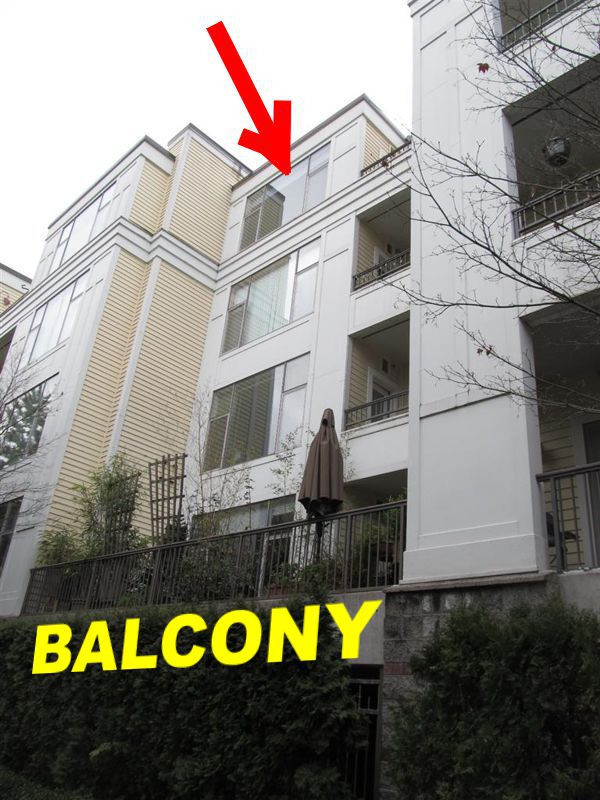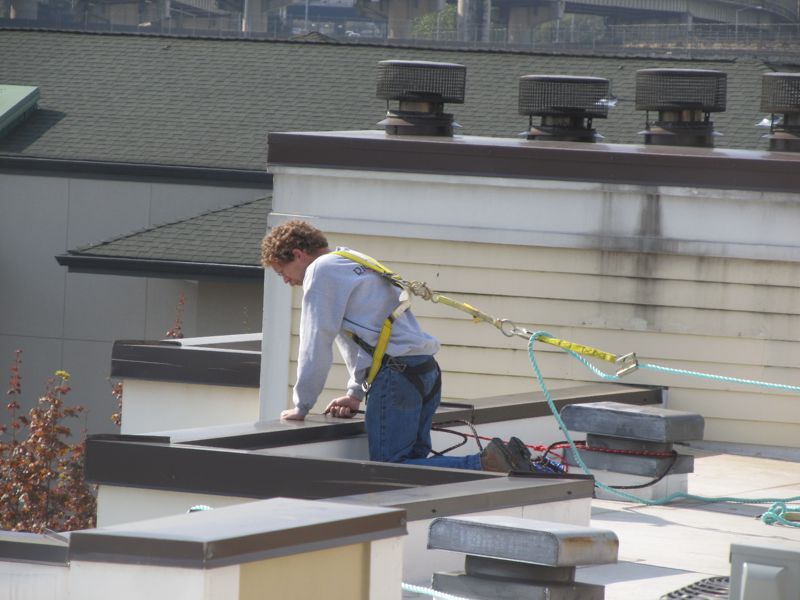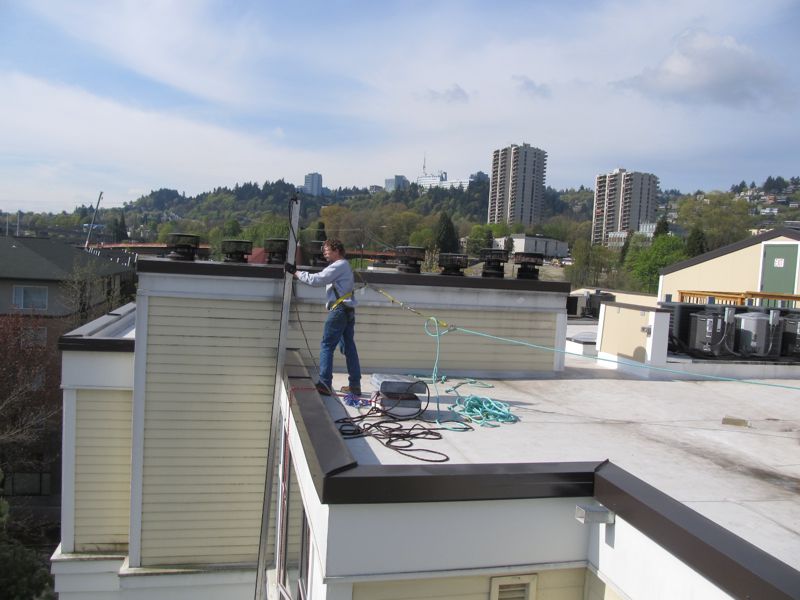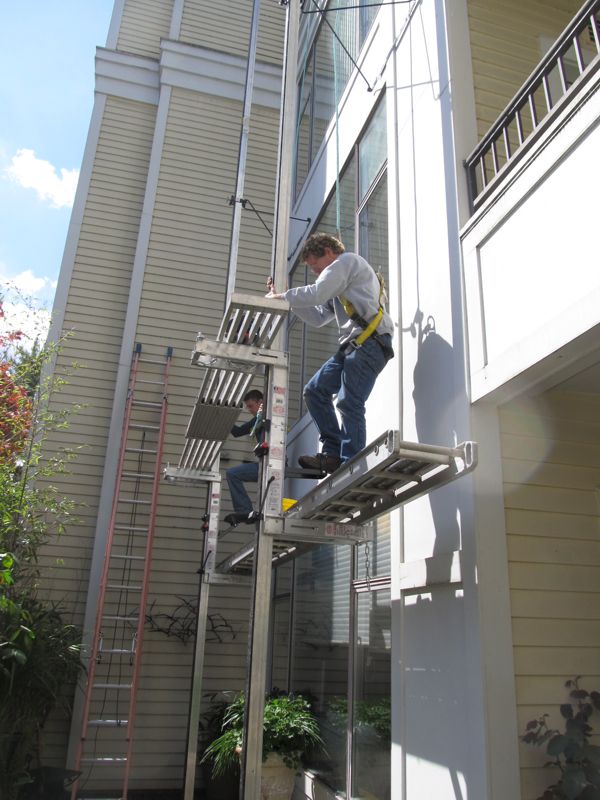|

A large picture window with failed glass that must be removed from the exterior. Among all the condos along the river in S.W. Portland, for whom we have replaced failed glass, this particular opening proved among the most challenging. That is actually a sixth story opening.
|

And the reason is due to a completely enclosed courtyard. Only a steel pedestrian gate allows access…so there was no way to get a man-lift up to the opening. Add to that, a balcony over a story high, directly below the opening. The balcony pretty much nixed the use of scaffold.
|

The weapon of choice that is left for us to use are what are called “Pump-Jacks.” Brandon & Jared assemble the armaments and prepare for the attack.
|

High above from a lofty perch, Steve Hilt patiently awaits his role in this symphony of finely tuned advances upon our objective.
|

Ropes are tied to the ends of the pump jacks, and Steve pulls while Brandon and Corey push and guide the lower portions six floors below. You can barely make them out there at the bottom if you enlarge the photo.
|

One by one, the jacks are positioned up on the balcony below. Steve holds them while they are fastened to the exterior wall.
|

An hour or so later, Steve and Jared are pumping their way up the exterior wall to reach the sixth floor opening.
|

The glass is carefully removed to the exterior and set upon the pump-jack plank. You may be able to view it better if you enlarge the photo by clicking on it.
|

With Brandon’s help from the interior, the glass unit is rotated so that the narrower dimension is positioned vertically…
|